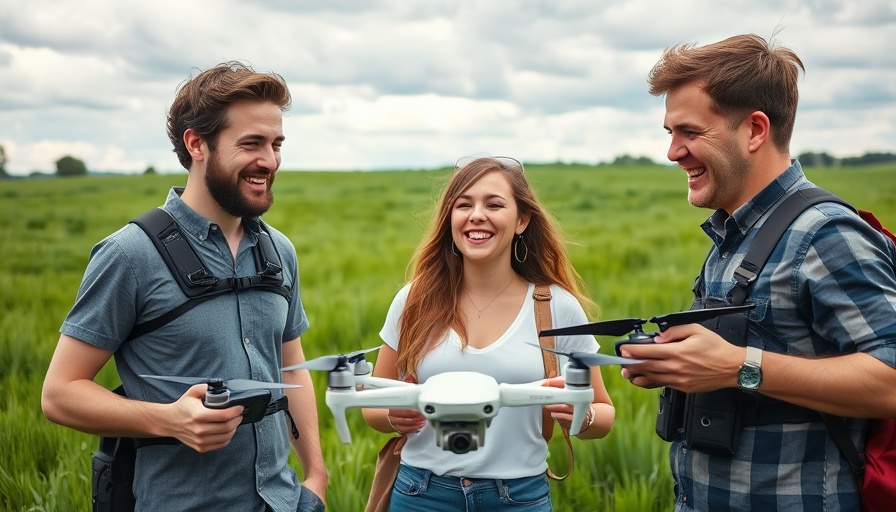
Lessons from a Live Stream: The Value of Connection
In a recent stream titled "not a live stream," drone enthusiast and content creator Stu from UV Futures confronted an unexpected challenge: a cold preventing him from delivering his usual engaging content. Instead of simply canceling the live broadcast, Stu embraced a different approach—he connected with his audience on a personal level, reminding them of the importance of community and support. His vulnerable admission struck a chord, making this brief stream about much more than drones; it became a heartfelt conversation about mental well-being and connectivity.
In 'not a live stream', Stu from UV Futures shares a personal story of illness and its impact, prompting us to delve deeper into the value of community within the drone hobby.
The Importance of Showing Up
In the current digital age, online platforms often feel devoid of the emotional bonds intrinsic to in-person interactions. When Stu logged on despite feeling under the weather, he symbolized resilience and thoughtfulness. Many viewers echoed their experiences of being unwell and the struggles involved in reaching out. His willingness to address these feelings made his community feel acknowledged, and that perspective is invaluable. It reinforces the idea that sometimes, simply showing up can mean the world to someone else.
Building Community in Tech Spaces
The world of drone enthusiasts and tech aficionados can sometimes feel isolated, primarily consisting of online interactions that lack a personal touch. The FPV (First Person View) drone community, like many others, often revolves around technical discussions and product showcases. However, moments like Stu's unplanned connection illustrate that emotional support can coexist with technological passion. Engaging with audiences on a human level can help build a robust, interconnected community. It's crucial that, in these often highly specialized fields, practitioners create spaces for sharing not only technical knowledge but also feelings of fraternity and camaraderie.
Encouraging Mental Wellness Through Acceptance
Stu’s message of being valued and cared for resonates particularly with those who might be struggling mentally or emotionally. In technology and drone spaces—often seen as male-dominated—there can be stigma around discussing mental health openly. By speaking candidly about feeling sick and the importance of self-care, Stu encourages others to recognize their worth and understand that they are not alone in their struggles. This mindset nurtures a culture where mental health is prioritized and openness is embraced.
Forward-Thinking: What's Next for Drone Enthusiasts?
Despite his temporary setback, Stu assured his audience that they could look forward to more enlightening discussions about drones. This serves as a reminder that technology enthusiasts don't just chase the next big innovation; they also prioritize connection. Next week's anticipated return to typical programming will undoubtedly be enriched by this moment of vulnerability. Creators and professionals within the drone space should take this as a cue to prioritize community, ensuring that the identity of shared passion is equally matched by empathy and support.
Conclusion: A Call to Reach Out
Stu's brief but impactful stream serves as a timely reminder of the power of support and connection within niche communities. As the tech landscape continually evolves, it is essential for fans and professionals alike to cultivate spaces that value human interaction alongside technological innovation. Remember, you are not alone, and reaching out can make a significant difference in your experience. If you're feeling isolated or struggling, consider connecting with your community or seeking professional help. Your mental wellness matters. Let's continue to fortify this vibrant community—together.
 Add Row
Add Row  Add
Add 




Write A Comment